This is it, the final score, and what seems to be my annual love letter to shortstops, with four of them in the top five this year -- a testament to the value of a player who can stay at the infield's most challenging position and provide some offense as well.
Most of these names will be familiar to you already, either because they've been on these lists before, because they've appeared in the majors already (six of them, including the top two) or because they've been traded recently (four). The one thing they all have in common is that they all look likely to become stars once they reach their major league peaks.
Editor's note: Age is the player's age as of July 1, 2017.
Top 100 prospects ranked 1-20 | 21-40 | 41-60 | 61-80 | 81-100 | Index
 20. Jason Groome, LHP, Boston Red Sox
20. Jason Groome, LHP, Boston Red Sox
Age: 18 (8/23/98) | B/T: L/L
Height: 6-6 | Weight: 220
Top level: Short-season A-ball | 2016: NE
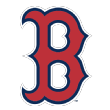 Groome was the No. 2 player on my board in the 2016 draft, but he slipped to the Red Sox at the 12th pick overall because of concerns about his signability and off-field questions, which allowed Boston to take a lefty with one of the best curveballs I’ve ever seen from a high-schooler.
Groome was the No. 2 player on my board in the 2016 draft, but he slipped to the Red Sox at the 12th pick overall because of concerns about his signability and off-field questions, which allowed Boston to take a lefty with one of the best curveballs I’ve ever seen from a high-schooler.
Groome is a good athlete with a very easy delivery, sitting 90-94 mph pretty regularly with projection to get up to the mid-90s on his fastball in time, something he has only done before when pitching in short stints. The curveball is a hammer, a grade-70 pitch he can throw for strikes that will buckle a lot of knees in A-ball this year, though I would guess the Red Sox will ask him to throw it less often to work on fastball command and develop his untrained changeup.
His arm works well, and he has the size to work downhill with his fastball, one of the aspects lacking from his game at the moment. He’s still relatively unpolished and probably four years away from the majors, so there’s a higher flameout or injury risk -- maybe 30 percent or so -- than there is for other arms in this region of the rankings. I’ll still take a big lefty with an out pitch curveball and potential for a grade-55 or better fastball any day of the week.
 19. Brendan Rodgers, SS, Colorado Rockies
19. Brendan Rodgers, SS, Colorado Rockies
Age: 20 (8/9/96) | B/T: R/R
Height: 6-0 | Weight: 180
Top level: Low-A | 2016: 11
 Rodgers was the third overall pick in the 2015 draft, behind Dansby Swanson and Alex Bregman, but he was first on my board as the most likely of the three to stay at shortstop while also providing some real power upside. All of that is still true, though Bregman and Swanson have raced to the majors while Rodgers is likely to begin this year in High-A at the age of 20. He’ll be in hitter-friendly Lancaster, now the best environment for offense in the California League, so don’t be shocked if he puts up huge stats.
Rodgers was the third overall pick in the 2015 draft, behind Dansby Swanson and Alex Bregman, but he was first on my board as the most likely of the three to stay at shortstop while also providing some real power upside. All of that is still true, though Bregman and Swanson have raced to the majors while Rodgers is likely to begin this year in High-A at the age of 20. He’ll be in hitter-friendly Lancaster, now the best environment for offense in the California League, so don’t be shocked if he puts up huge stats.
Rodgers has great feel to hit for his age and makes a lot of hard contact, striking out just 98 times in 110 games as a 19-year-old in Low-A, with fringe-average power now that projects to 20-25 homers in the majors. He’s a grade-40 runner who has somewhat stiff hips for a shortstop and doesn’t cross over well, but he has great hands and good instincts to position himself well for average range. And his plus arm allows him to range back to his left. His great stat line for Asheville last year was probably boosted by his home park, and he didn’t hit well on the road, so take some of the present power numbers with a grain of salt. The power will come in time, but in a neutral park, he wouldn’t have hit 19 homers in 2016. As an average defender at short who should hit in the .280-plus range with 20-25 homers, he’d be an above-average regular who could make some All-Star teams in peak years.
 18. Francisco Mejia, C, Cleveland Indians
18. Francisco Mejia, C, Cleveland Indians
Age: 21 (10/27/95) | B/T: B/R
Height: 5-10 | Weight: 175
Top level: High-A | 2016: NR
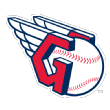 Mejia had one of the minors’ biggest breakout seasons in 2016, establishing himself as the game’s top catching prospect, with his 50-game hitting streak making news. But he has become a legitimate front-line option. Mejia is a switch-hitter with a bit of an unconventional approach, but he has outstanding bat-to-ball skills from both sides of the plate, showing sneaky pop already in his age-20 season with the potential to get to the 15-20 homer range in time.
Mejia had one of the minors’ biggest breakout seasons in 2016, establishing himself as the game’s top catching prospect, with his 50-game hitting streak making news. But he has become a legitimate front-line option. Mejia is a switch-hitter with a bit of an unconventional approach, but he has outstanding bat-to-ball skills from both sides of the plate, showing sneaky pop already in his age-20 season with the potential to get to the 15-20 homer range in time.
Behind the plate, Mejia receives well and can show an 80-grade arm when necessary. He is still improving on the finer points of catching, such as game-calling and planning for hitters. By all accounts, he’s not there yet, but he has a good chance to reach a level at which he’s adequate with the bat and arm. There’s always the chance he becomes Carlos Santana and has value at another position where he’d play another 20-25 games a year, but if Mejia catches, he might be MVP-worthy, like Joe Mauer, but with a better build for the position.
 17. Yoan Moncada, 2B/3B, Chicago White Sox
17. Yoan Moncada, 2B/3B, Chicago White Sox
Age: 22 (5/27/95) | B/T: B/R
Height: 6-2 | Weight: 205
Top level: MLB | 2016: 17
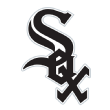 He's an enormous, explosive athlete who can flash all sorts of baseball skills. Moncada looks like Lawrence Taylor in a baseball uniform, but if you saw him in the majors in September, you also saw some of the flaws in his game. Moncada is a plus runner with good bat speed and plus raw power, with a better left-handed swing but potential on both sides of the plate. He has moved around the diamond a little, looking too stiff and upright at second but much better at third base, a position that demands quicker reactions and relies less on getting down to field slower ground balls.
He's an enormous, explosive athlete who can flash all sorts of baseball skills. Moncada looks like Lawrence Taylor in a baseball uniform, but if you saw him in the majors in September, you also saw some of the flaws in his game. Moncada is a plus runner with good bat speed and plus raw power, with a better left-handed swing but potential on both sides of the plate. He has moved around the diamond a little, looking too stiff and upright at second but much better at third base, a position that demands quicker reactions and relies less on getting down to field slower ground balls.
He destroyed High-A to start 2016, then hit well in Double-A (.277/.379/.531) but struck out 31 percent of the time, and then looked lost with a late promotion to the big leagues. However, Moncada wraps his bat and can’t get to the stuff thrown inside and backspin it, getting on top of those pitches or missing them entirely. When he reached the majors, it was as if he’d never seen a breaking ball in his life. The latter problem can change with development time, but the former is a more significant mechanical question that reduces his likely ceiling for me. The White Sox, having just acquired him, have no need to rush him and should let him spend the year in Triple-A. I think he’s going to be a good big leaguer, maybe an above-average one, but there’s also a pretty high risk involved here, maybe 30 percent, that he never lives up to his physical tools.
 16. Mitch Keller, RHP, Pittsburgh Pirates
16. Mitch Keller, RHP, Pittsburgh Pirates
Age: 21 (4/4/96) | B/T: R/R
Height: 6-3 | Weight: 195
Top level: High-A | 2016: NR
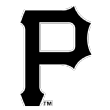 Keller had a miserable, injury-plagued 2015 season, walking 16 in 19 innings in short-season ball with a 5.49 ERA, so his 2016 breakout might be the most unexpected minor league performance of the year. He walked three more guys in 111 more innings and posted a 2.35 ERA on the season with 138 punchouts while pitching most of the year in Low-A until his final mic-drop start of the season for High-A Bradenton (6 innings, 0 runs, 7 strikeouts).
Keller had a miserable, injury-plagued 2015 season, walking 16 in 19 innings in short-season ball with a 5.49 ERA, so his 2016 breakout might be the most unexpected minor league performance of the year. He walked three more guys in 111 more innings and posted a 2.35 ERA on the season with 138 punchouts while pitching most of the year in Low-A until his final mic-drop start of the season for High-A Bradenton (6 innings, 0 runs, 7 strikeouts).
The Pirates made a minor mechanical change to Keller in instructional league in 2015, and then he went home and got himself in The Best Shape of His Life™ before spring training, after which he started the year throwing 92-95 mph, which became 92-97 and eventually topped out at 99 in August. He has a plus breaking ball now and an average changeup he has been throwing only since he entered pro ball. He’s one of the best pitching prospects in baseball and, health permitting, his floor is becoming a No. 3 starter. But his ceiling is ace, which is well within reach.
 15. Nick Senzel, 3B, Cincinnati Reds
15. Nick Senzel, 3B, Cincinnati Reds
Age: 22 (6/29/95) | B/T: R/R
Height: 6-1 | Weight: 205
Top level: Low-A | 2016: NE
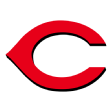 Senzel was a huge question mark entering his junior year at Tennessee; most scouts agreed he could hit, but he was a poor defender at third with an unclear future in the field and hadn’t shown the power needed to profile at a corner. To his great credit, Senzel worked to make himself an asset on defense at third, no worse than average in the big leagues, and doubled his home run total from his sophomore year, which led the Reds to take him with the second overall pick in the 2016 draft.
Senzel was a huge question mark entering his junior year at Tennessee; most scouts agreed he could hit, but he was a poor defender at third with an unclear future in the field and hadn’t shown the power needed to profile at a corner. To his great credit, Senzel worked to make himself an asset on defense at third, no worse than average in the big leagues, and doubled his home run total from his sophomore year, which led the Reds to take him with the second overall pick in the 2016 draft.
Cincinnati was aggressive with his assignment after he signed, sending him to Low-A Dayton, and all he did was hit .329/.420/.567 in 210 plate appearances, which would have led the league in OBP and slugging if he’d played enough. Senzel is a 60 runner who might end up swinging a 70 bat, and in a neutral park should be good for 15-20 homers a year, maybe 20-25 if his home park in the majors is Cincinnati’s. Even average defense at third would make him a potential All-Star, and if he’s got the hit tool, he should be on track to reach the majors by September.
 14. Josh Bell, 1B/OF, Pittsburgh Pirates
14. Josh Bell, 1B/OF, Pittsburgh Pirates
Age: 24 (8/14/92) | B/T: B/R
Height: 6-2 | Weight: 240
Top level: MLB | 2016: 56
 Bell fell two at-bats short of losing his rookie status for 2017, which would have knocked him off the list, but just look at what he did in his big league time: hitting .273/.368/.406 with more walks than strikeouts after hitting a career-best 14 homers in about 80 percent of a season in Triple-A.
Bell fell two at-bats short of losing his rookie status for 2017, which would have knocked him off the list, but just look at what he did in his big league time: hitting .273/.368/.406 with more walks than strikeouts after hitting a career-best 14 homers in about 80 percent of a season in Triple-A.
Bell is a huge guy with the hitting approach of a smaller hitter. He goes the other way exceptionally well, working the count, but also unleashes some power -- there’s a ball in the Allegheny River right now that will testify to this -- when he gets a pitch to drive. Continuing to ambush pitches he can hit for power, especially when ahead in the count, will be key to reaching his ceiling as a .280/.400/.500 type of hitter. He should have 25 homers regularly but is more valuable for his ability to hit and get on base.
Bell’s only real flaw now is his lack of a position; although better than he was a year ago, he’s not good at first base, certainly not MLB-ready there, and will probably never be more than just adequate with the glove. But if you look at his 2016 performance at both levels and the physical tools -- including the raw power -- that Bell has had since high school, you can see the potential for a four- or five-win bat even without providing any help on defense.
 13. Lucas Giolito, RHP, Chicago White Sox
13. Lucas Giolito, RHP, Chicago White Sox
Age: 22 (7/14/94) | B/T: R/R
Height: 6-6 | Weight: 255
Top level: MLB | 2016: 3
 Giolito’s big league debut went poorly, though there are some good reasons why -- the Nationals had tried to alter his delivery early in the spring, which cost him control and velocity, and promoted him to the majors not long after restoring his previous mechanics. He was still touching 96 mph in the majors and sitting around 93 with his fastball, so his arm is fine, though between that and the different baseballs, he didn’t show the dominance he had in the low minors.
Giolito’s big league debut went poorly, though there are some good reasons why -- the Nationals had tried to alter his delivery early in the spring, which cost him control and velocity, and promoted him to the majors not long after restoring his previous mechanics. He was still touching 96 mph in the majors and sitting around 93 with his fastball, so his arm is fine, though between that and the different baseballs, he didn’t show the dominance he had in the low minors.
When he’s right, Giolito will sit at 93-95 mph with his four-seamer, touching 97 or 98, with an out-pitch curveball, average or better change and a two-seamer he can use to mitigate the lack of life on his four-seamer. He’s a superb athlete with a clean, repeatable delivery, one that might not provide a ton of deception but does allow him to throw plenty of strikes.
He has been healthy since 2012 Tommy John surgery and is almost ready for a major league rotation spot right now, with plenty of untapped upside for his new employers to coax out. There’s No. 1 starter ceiling here given the size, delivery and out pitch in the curveball, with a mid-rotation floor.
 12. Eloy Jimenez, OF, Chicago Cubs
12. Eloy Jimenez, OF, Chicago Cubs
Age: 20 (11/27/96) | B/T: R/R
Height: 6-4 | Weight: 205
Top level: Low-A | 2016: NR
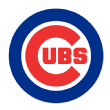 The Cubs’ 2013 international haul included both Jimenez and Gleyber Torres, both of whom look like potential superstars right now, though Torres is now in the Yankees’ system. If you saw the 2016 Futures Game, you saw what Jimenez can do -- he made one of the greatest catches I’ve ever seen any right fielder make, running all the way to the line and leaping the wall to catch a foul popup. He also hit a home run off the third level of the left-field façade at Petco Park, a distance few big leaguers have reached.
The Cubs’ 2013 international haul included both Jimenez and Gleyber Torres, both of whom look like potential superstars right now, though Torres is now in the Yankees’ system. If you saw the 2016 Futures Game, you saw what Jimenez can do -- he made one of the greatest catches I’ve ever seen any right fielder make, running all the way to the line and leaping the wall to catch a foul popup. He also hit a home run off the third level of the left-field façade at Petco Park, a distance few big leaguers have reached.
Jimenez made his full-season debut last year at age 19 and hit .329/.369/.523, leading the league in slugging by 50 points and finishing 12th in OBP (behind 11 older players), but he wasn’t among the top 50 in strikeouts. Listed at 6-foot-4 and probably bigger than that, Jimenez has a swing that plays shorter. He repeats it very well, getting his hands to the zone quickly from his loaded position with enough loft in his finish to hit line drives and hit for power. If you’re looking to nitpick, he could walk more, but he was the age of a college freshman and just destroyed a full-season league. It’s so nice to see those downtrodden Cubs have some good news on the horizon.
 Devers has been somewhat overshadowed the last year-plus by more famous prospects in the Red Sox system, including Andrew Benintendi and the now-traded Yoan Moncada, but Devers is an elite, high-upside prospect in his own right. He's a true third baseman with an exceptional ability to hit and huge raw power he’s just beginning to display in games. Devers’ main tool is his bat. He has great hand-eye coordination, and the ball comes off his bat exceptionally well; power should come easily without having to change his approach or swing.
Devers has been somewhat overshadowed the last year-plus by more famous prospects in the Red Sox system, including Andrew Benintendi and the now-traded Yoan Moncada, but Devers is an elite, high-upside prospect in his own right. He's a true third baseman with an exceptional ability to hit and huge raw power he’s just beginning to display in games. Devers’ main tool is his bat. He has great hand-eye coordination, and the ball comes off his bat exceptionally well; power should come easily without having to change his approach or swing.
After a miserable April, Devers hit .310/.354/.478 in 107 games the rest of the season, all as a 19-year-old in High-A. He was the third-youngest regular in the Carolina League, but despite playing the entire year at the level, his strikeout rate was just 17.2 percent, ranking 18th of 56 players who had at least 300 at-bats in the league. And there is big power to come -- Devers can already put the ball out to dead center on a line, so it’s a matter of some physical maturity and maintaining that hard-contact approach rather than becoming too pull-oriented.
Devers is big for third base, but he's agile enough for the position with good hands and a plus arm. Moving Moncada clears a path for Devers to take over at the hot corner in Fenway sometime in late 2018. Even average defense at third would make him an All-Star given how much I expect him to hit for power.
 10. Alex Reyes, RHP, St. Louis Cardinals
10. Alex Reyes, RHP, St. Louis Cardinals
Age: 22 (8/29/94) | B/T: R/R
Height: 6-3 | Weight: 185
Top level: MLB | 2016: 8
 Reyes nearly lost his rookie eligibility in 2016, missing the cutoff by four innings, but he heads into 2017 with a likely spot in the St. Louis rotation and as one of the early favorites for NL Rookie of the Year. Reyes will show No. 1 starter stuff, starting with a power fastball he dials up to 94-98 mph when he starts (and to 96-101 mph when he worked a short outing at the Futures Game last year). He mixes in a plus-plus changeup and a hard but average curveball that he tends to cast rather than finishing out front. His fastball and changeup miss bats, and the breaking ball could get there as well.
Reyes nearly lost his rookie eligibility in 2016, missing the cutoff by four innings, but he heads into 2017 with a likely spot in the St. Louis rotation and as one of the early favorites for NL Rookie of the Year. Reyes will show No. 1 starter stuff, starting with a power fastball he dials up to 94-98 mph when he starts (and to 96-101 mph when he worked a short outing at the Futures Game last year). He mixes in a plus-plus changeup and a hard but average curveball that he tends to cast rather than finishing out front. His fastball and changeup miss bats, and the breaking ball could get there as well.
Reyes has a short stride and lands stiffly, which is why the curveball doesn’t have the bite you would expect at 75-80 mph, and his fastball often rides up in the zone. Short striders are prone to those command issues and to shoulder problems, and Reyes missed part of 2015 with a sore shoulder, then missed the start of 2016 after a suspension for marijuana (which is unrelated to the short stride, I think). There’s more risk to Reyes than other prospects with No. 1 starter potential, but he has as much upside as they do, with command and that inconsistent breaking ball keeping him from being an ace at the moment.
 9. Austin Meadows, OF, Pittsburgh Pirates
9. Austin Meadows, OF, Pittsburgh Pirates
Age: 22 (5/3/95) | B/T: L/L
Height: 6-3 | Weight: 200
Top level: Triple-A | 2016: 16
 Meadows is an outstanding athlete who continued to show real progress on both sides of the ball in 2016 -- wrapped around his usual love affair with the disabled list. (It doesn’t love you back, Austin.) He got out of the Florida State League and started to drive the ball more effectively, hitting more doubles, triples and homers than he did in 2015 despite playing 40 fewer games. He’s still a little ground ball-prone and can roll the ball over to the second baseman too often, but not to the extent he showed the year before. He has both bat speed and strength to eventually hit 20-25 homers.
Meadows is an outstanding athlete who continued to show real progress on both sides of the ball in 2016 -- wrapped around his usual love affair with the disabled list. (It doesn’t love you back, Austin.) He got out of the Florida State League and started to drive the ball more effectively, hitting more doubles, triples and homers than he did in 2015 despite playing 40 fewer games. He’s still a little ground ball-prone and can roll the ball over to the second baseman too often, but not to the extent he showed the year before. He has both bat speed and strength to eventually hit 20-25 homers.
Meadows has also shown a very advanced approach at the plate for his age and inexperience -- he has played only 307 games across three-plus seasons because of injuries -- even maintaining his high contact rate in his spotty Triple-A debut. He’s an above-average runner who’s outgrowing center field but should be a plus defender in right when he’s finished filling out. He’s going to be an impact guy on offense and defense, a potential No. 2 hitter who shows power and gets on base while saving five or more runs a year in right field.
 8. Victor Robles, CF, Washington Nationals
8. Victor Robles, CF, Washington Nationals
Age: 20 (5/19/97) | B/T: R/R
Height: 6-0 | Weight: 185
Top level: Low-A | 2016: 49
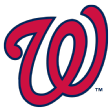 Robles is a true five-tool player who has progressed quickly since signing in 2013 as a 16-year-old. He played well at both A-ball levels in 2016, with only a Michael Kopech fastball to the hand slowing him down. Robles is a 70 runner and plus fielder in center with a plus arm, and at the plate, you can comfortably project him to have a plus hit tool. He’s already pretty advanced with great bat speed, strong hands and the ability to use the whole field.
Robles is a true five-tool player who has progressed quickly since signing in 2013 as a 16-year-old. He played well at both A-ball levels in 2016, with only a Michael Kopech fastball to the hand slowing him down. Robles is a 70 runner and plus fielder in center with a plus arm, and at the plate, you can comfortably project him to have a plus hit tool. He’s already pretty advanced with great bat speed, strong hands and the ability to use the whole field.
The power is more projection right now, but he has the raw ingredients to get there, similar to Andrew McCutchen at the same age; McCutchen had the bat speed, the frame and the quick wrists for power but needed to finish physically maturing. I don’t think it’s unreasonable to hope for a Cutch sort of ceiling, and I don’t think it was unreasonable for the Nats to make Robles the one prospect they were keeping at all costs this winter.
 7. Michael Kopech, RHP, Chicago White Sox
7. Michael Kopech, RHP, Chicago White Sox
Age: 21 (4/30/96) | B/T: R/R
Height: 6-3 | Weight: 205
Top level: High-A | 2016: NR
 Kopech’s pro career got off to a rocky start, but once he returned from the disabled list in mid-June 2016, he emerged as one of the top pitching prospects in all of baseball, which in turn allowed the Red Sox -- who selected him with the 33rd overall pick in the 2014 draft -- to use him to land Chris Sale in a trade with the White Sox.
Kopech’s pro career got off to a rocky start, but once he returned from the disabled list in mid-June 2016, he emerged as one of the top pitching prospects in all of baseball, which in turn allowed the Red Sox -- who selected him with the 33rd overall pick in the 2014 draft -- to use him to land Chris Sale in a trade with the White Sox.
Kopech can touch triple digits with his fastball, which regularly sits in the upper 90s -- he was clocked at 96-99 mph in his first outing in the Arizona Fall League -- with ridiculous arm speed and huge extension over his front side that must make hitters think the ball is coming in at 110. He has some feel for both a hard slider and changeup, though neither is very consistent just yet, with the changeup a little ahead the last time I saw him pitch.
Kopech has modeled himself after Noah Syndergaard, another huge Texas right-hander who came out of high school with a fastball, a good delivery and little else, and the results so far are very promising. Other than a slight cutoff in his landing, Kopech’s delivery works and should allow him to develop average or better command over time. He just needs to pitch, both to build up durability and work on fastball command and getting those two off-speed pitches to be regularly above average. His upside is that of a No. 1 starter who has two or three truly plus pitches and logs 200 innings a year.
 6. Cody Bellinger, 1B/OF, Los Angeles Dodgers
6. Cody Bellinger, 1B/OF, Los Angeles Dodgers
Age: 21 (7/13/95) | B/T: L/L
Height: 6-4 | Weight: 210
Top level: Triple-A | 2016: 92
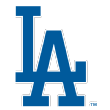 Bellinger was a fourth-round pick out of football powerhouse Hamilton High School in Chandler, Arizona, back in 2013, and even though it looks crazy now that a prospect this good fell to the fourth round, consider what he was then. The track record of high school first basemen taken high in the draft is poor, and teams shy away from that profile because there’s really no way out if something goes wrong -- a first baseman has to hit to justify his existence, and if his defense is a problem, there’s nowhere to hide him. Bellinger also had a big, long swing that looked certain to result in a ton of strikeouts, and his father, former Yankee Clay, was a 25th man/utility guy, not a superstar like his son now appears to be.
Bellinger was a fourth-round pick out of football powerhouse Hamilton High School in Chandler, Arizona, back in 2013, and even though it looks crazy now that a prospect this good fell to the fourth round, consider what he was then. The track record of high school first basemen taken high in the draft is poor, and teams shy away from that profile because there’s really no way out if something goes wrong -- a first baseman has to hit to justify his existence, and if his defense is a problem, there’s nowhere to hide him. Bellinger also had a big, long swing that looked certain to result in a ton of strikeouts, and his father, former Yankee Clay, was a 25th man/utility guy, not a superstar like his son now appears to be.
Cody is not his father in any respect. Scouts universally praise his ability to make substantial adjustments at the plate, even when moving up a level. He left the High-A California League, a hitter-friendly circuit, and cut his strikeout rate by a third despite moving up to Double-A, losing no power and even raising his OBP in the process. He generates a ton of torque through his hips, producing all that power, so he has been productive even as he’s figuring out who he is as a hitter -- and who he is keeps getting better each season.
Bellinger is also an elite defensive first baseman, providing a big target for fielding throws, moving exceptionally well around the bag, grading out as a 70 defender who might be even better, and he gives his team the flexibility to put him in any outfield spot, including center, if the need arises. Adrian Gonzalez with better defense? Eric Hosmer with power? Any reasonable comparison needs a modifier because Bellinger, still just 21 years old, has so much untapped upside yet to be discovered.
 5. J.P. Crawford, SS, Philadelphia Phillies
5. J.P. Crawford, SS, Philadelphia Phillies
Age: 22 (1/11/95) | B/T: L/R
Height: 6-2 | Weight: 180
Top level: Triple-A | 2016: 4
 As good as Crawford could be, he had a disappointing Triple-A debut in 2016 after starting the year back in Double-A Reading, where he did his usual act of getting on base and playing great defense. He has struggled after promotions before, but never to this extent, and it seemed like playing in Reading, the most homer-friendly park in the Eastern League, affected his approach.
As good as Crawford could be, he had a disappointing Triple-A debut in 2016 after starting the year back in Double-A Reading, where he did his usual act of getting on base and playing great defense. He has struggled after promotions before, but never to this extent, and it seemed like playing in Reading, the most homer-friendly park in the Eastern League, affected his approach.
Crawford at his best is a disciplined hitter, unafraid to hit with two strikes, willing to use the whole field, but unlikely to hit for much power -- he’s not big and his swing isn’t geared that way. He instead posts high OBPs with doubles and lots of speed. He’s a potentially elite defender at short with good range in both directions and a very quick transfer. The challenges for Crawford in 2016 are to return to his prior approach and show greater physical commitment to the tasks at hand. He’s blessed with the talent to be a perennial All-Star at shortstop who saves 5-10 runs a year with his glove and gets on base 40 percent of the time.
 4. Gleyber Torres, SS, New York Yankees
4. Gleyber Torres, SS, New York Yankees
Age: 20 (12/13/96) | B/T: R/R
Height: 6-1 | Weight: 175
Top level: High-A | 2016: 15
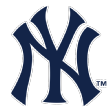 Torres showed up to spring training a little heavy in 2016, but after that, it was all good news for the Yankees’ new heir apparent at short; the Cubs traded him to the Bronx as the main piece in the Aroldis Chapman deal. After that, Torres went to the AFL and led the league in OBP, finished second in slugging and became the youngest winner of the AFL MVP award in the league’s 25-year history. To get this kind of player for two months of a one-inning reliever has to make Yankee fans’ hearts sing.
Torres showed up to spring training a little heavy in 2016, but after that, it was all good news for the Yankees’ new heir apparent at short; the Cubs traded him to the Bronx as the main piece in the Aroldis Chapman deal. After that, Torres went to the AFL and led the league in OBP, finished second in slugging and became the youngest winner of the AFL MVP award in the league’s 25-year history. To get this kind of player for two months of a one-inning reliever has to make Yankee fans’ hearts sing.
Torres is an advanced hitter at the plate with a great approach that has him going the other way well with pitches on the outer half, and he makes adjustments from one at-bat to the next like a much older player. He can square up good velocity, although his recognition of off-speed stuff still needs some work.
Although I’ve had scouts question whether he’ll stay at shortstop because of his build, he has a 70-grade arm and great hands, and I think he has enough lateral range that he’s more likely to remain at the position than move to third. He was the second-youngest regular in the Carolina League last year and will play all of 2017 at age 20, starting in Double-A. He has the ability to pick up sliders and changeups -- that's the difference between him and a promotion. He’s the Yankees’ new shortstop of the future, a player with All-Star upside and a very high floor because of his feel for hitting.
 3. Amed Rosario, SS, New York Mets
3. Amed Rosario, SS, New York Mets
Age: 21 (11/20/95) | B/T: R/R
Height: 6-2 | Weight: 170
Top level: Double-A | 2016: 42
 Rosario signed with the Mets in 2012 for $1.75 million, the largest bonus the club had ever given an international amateur free agent. Since the 2014 season, his star has been heading straight up. The Mets made the peculiar decision to have Rosario return to High-A to start 2016, but he raked in his second season in St. Lucie, moved up to Double-A in late June and hit better across the board at the higher level against better pitching. Rosario is still just scratching the surface of his offensive potential; there’s so much bat speed and strength here that he should eventually hit 15-20 homers, but right now, it’s translating into hard contact to all fields.
Rosario signed with the Mets in 2012 for $1.75 million, the largest bonus the club had ever given an international amateur free agent. Since the 2014 season, his star has been heading straight up. The Mets made the peculiar decision to have Rosario return to High-A to start 2016, but he raked in his second season in St. Lucie, moved up to Double-A in late June and hit better across the board at the higher level against better pitching. Rosario is still just scratching the surface of his offensive potential; there’s so much bat speed and strength here that he should eventually hit 15-20 homers, but right now, it’s translating into hard contact to all fields.
Rosario is big for shortstop but in his own league athletically. He’s almost a lock to stay at the position, and he's gifted with quick actions, a plus arm and the ability to throw accurately while in motion. He also saw his walk rate soar with just a modest rise in his strikeout rate, which is still quite low for a hitter projected to come into power. He has MVP potential as a true shortstop who will be above average defensively and projects to hit .300 with some walks and power. He’ll become a cornerstone at short for the Mets, who have lacked one since Jose Reyes first left in free agency.
 2. Dansby Swanson, SS, Atlanta Braves
2. Dansby Swanson, SS, Atlanta Braves
Age: 23 (2/11/94) | B/T: R/R
Height: 6-0 | Weight: 175
Top level: MLB | 2016: 13
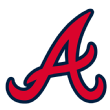 "Lieutenant Dans" missed the rookie cutoff by one at-bat in 2016, so he gets one more year in the top 20 before graduating in his first game this season. Swanson overmatched High-A pitching early last year before a promotion to Double-A, where his college propensity to swing and miss started to catch up to him, but his brief trial in the majors went very well, and he didn’t have the same trouble hitting high-velocity pitches. Swanson is an above-average defender at short with great instincts who played well there in the big leagues, enough to lock down the position and persuade Atlanta to move fellow prospect Ozhaino Albies to second base.
"Lieutenant Dans" missed the rookie cutoff by one at-bat in 2016, so he gets one more year in the top 20 before graduating in his first game this season. Swanson overmatched High-A pitching early last year before a promotion to Double-A, where his college propensity to swing and miss started to catch up to him, but his brief trial in the majors went very well, and he didn’t have the same trouble hitting high-velocity pitches. Swanson is an above-average defender at short with great instincts who played well there in the big leagues, enough to lock down the position and persuade Atlanta to move fellow prospect Ozhaino Albies to second base.
At the plate, Swanson is going to strike out more than the typical hitter of this profile, so while he has doubles power and will add value on the bases, he’s going to have to raise his contact rate to become a real asset at the plate. His debut in Atlanta was boosted by a .383 BABIP that he’s not going to repeat, though I think he has enough feel to hit that he will have a BABIP above league average. He’s a high-floor guy with some low-probability ceiling -- at worst, a solid-average major league shortstop right now and potentially an All-Star given some changes in his approach at the plate.
 1. Andrew Benintendi, OF, Boston Red Sox
1. Andrew Benintendi, OF, Boston Red Sox
Age: 22 (7/6/94) | B/T: L/L
Height: 5-10 | Weight: 170
Top level: MLB | 2016: 18
 The Red Sox picked seventh in the 2015 draft and used that selection on a draft-eligible sophomore from the University of Arkansas who hit .276/.368/.333 with one home run in his freshman year. Of course, Benintendi then hit 20 bombs with a .376/.488/.717 line as a sophomore, won the Golden Spikes Award and has since dominated at every level of the minors. He earned a call-up on Aug. 2 that would have cost him his rookie eligibility -- and his spot on this list -- had he not suffered a knee sprain that held him out three weeks.
The Red Sox picked seventh in the 2015 draft and used that selection on a draft-eligible sophomore from the University of Arkansas who hit .276/.368/.333 with one home run in his freshman year. Of course, Benintendi then hit 20 bombs with a .376/.488/.717 line as a sophomore, won the Golden Spikes Award and has since dominated at every level of the minors. He earned a call-up on Aug. 2 that would have cost him his rookie eligibility -- and his spot on this list -- had he not suffered a knee sprain that held him out three weeks.
Benintendi is only about 5-foot-8 (though listed at a generous 5-foot-10) but has no problem generating plus power between his hand speed and the loft in his swing’s finish. He has more power to his pull side but more than enough to drive the ball out to the left-field wall. His plate discipline might be even more impressive than how hard he makes contact; he walked more than he struck out across his brief minor league tenure and then saw just more than four pitches per plate appearance in the majors last fall. Benintendi showed enough patience that manager John Farrell has said he might make the outfielder his No. 2 hitter.
Although Benintendi played more left field in the majors, he’s capable of playing above-average defense in center if need be, thanks to above-average speed and good instincts. And if he was a center-fielder with just average defense, he’d still be an All-Star thanks to the potential for him to post OBPs near .400 with 25-plus homers and value on the bases. And if the Sox end up putting him in center, Benintendi would be a potential six-win player. That’s incredible value for the seventh overall pick, and it makes Benintendi the best prospect in baseball for 2017.
